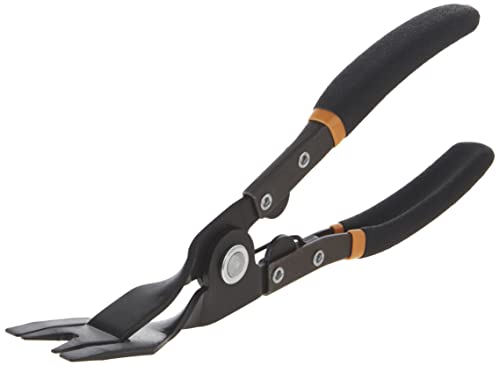Are Motorcycles Allowed to Go between Cars? Lane-Splitting Laws Unveiled
Motorcycles are generally allowed to go between cars, a practice known as lane splitting. However, this legality varies by state or country.
Motorcycles offer unique advantages in traffic, particularly the ability to maneuver through congested areas. Lane splitting can help reduce traffic congestion and improve overall road efficiency. Many riders find it enhances their safety by avoiding rear-end collisions. Despite its benefits, lane splitting is often misunderstood and subject to different laws based on location.
Some regions fully permit it, while others impose strict regulations or outright bans. Understanding local laws is crucial for riders. Knowledge of these regulations ensures compliance and promotes safer riding practices. This article will explore the nuances of lane splitting and its legal status across various jurisdictions.
Lane-splitting: Legal Or Not?
Lane-splitting refers to a motorcycle riding between lanes of slow-moving traffic. It is a common practice in many places. Riders can save time and avoid congestion. Some regions allow it, while others do not.
Different countries and states have varied laws on lane-splitting. For example:
| Region | Lane-Splitting Status |
|---|---|
| California | Legal |
| New York | Illegal |
| Florida | Not explicitly mentioned |
| Australia | Legal in some states |
Always check local laws before lane-splitting. Riders should prioritize safety and awareness on the road.
Safety Concerns Surrounding Motorcycles
Motorcycles face many safety issues on the road. Riders often deal with blind spots from cars. Cars may change lanes without noticing a motorcycle. This can lead to serious accidents.
Road conditions also play a big role. Potholes or debris can cause a rider to lose control. Wet or icy roads make it even more dangerous.
Traffic flow changes when motorcycles weave between cars. Some drivers may become annoyed or distracted. This can lead to sudden stops or lane changes.
| Hazard | Description |
|---|---|
| Blind Spots | Cars may not see motorcycles, causing accidents. |
| Road Conditions | Potholes and debris can lead to loss of control. |
| Driver Distraction | Weaving can annoy drivers, leading to dangerous situations. |
State-specific Regulations
Many states in the U.S. allow lane-splitting for motorcycles. This means riders can drive between lanes of slow-moving traffic. The rules for lane-splitting vary widely by state. Some states have clear laws, while others do not.
Here is a list of states that permit lane-splitting:
| State | Notes |
|---|---|
| California | Clear lane-splitting laws exist. |
| Oregon | Allowed under certain conditions. |
| Washington | Lane-splitting is not officially allowed. |
| Texas | Not explicitly legal but tolerated. |
Riders should check local laws. Always prioritize safety while lane-splitting. Some conditions may apply, such as speed limits and traffic flow.
Benefits Of Lane-splitting
Lane-splitting can greatly reduce traffic congestion. Motorcycles can move between cars easily. This helps to clear crowded roads quickly. Fewer vehicles on the road means less waiting time.
Motorcyclists save a lot of time by lane-splitting. They can reach their destinations faster. This practice reduces the stress of being stuck in traffic. Riders can enjoy a smoother ride.
Opposition And Controversy
Many people believe lane-splitting is unsafe. Accidents can happen easily in heavy traffic. Drivers may not see motorcycles. This can lead to serious injuries for motorcyclists.
Some argue it creates confusion on the road. Cars may not expect a motorcycle to pass them. This can cause panic and sudden stops. Many feel it breaks traffic rules.
Public opinion is mixed. Some think it is a good way to avoid traffic. Others worry about safety risks. The debate continues as laws vary by state.
Motorcyclist Safety Measures
Motorcyclists should always wear protective gear. This includes helmets, gloves, and jackets. Such gear helps reduce injuries in case of accidents.
Training is very important for safe riding. Riders must learn how to control their bikes. Understanding road rules and signs is crucial.
Safe riding practices include keeping a safe distance from other vehicles. Always use turn signals to communicate intentions. Avoid speeding and sudden maneuvers.
Staying alert to surroundings can prevent accidents. Watch for cars changing lanes or opening doors. Always be prepared for unexpected situations on the road.
Legal Consequences Of Illegal Lane-splitting
Illegal lane-splitting can lead to serious legal consequences. Riders caught lane-splitting may face significant penalties and fines. These can vary by state but often include hefty monetary charges.
For instance, some states impose fines up to $1,000 for this action. Repeat offenders may face increased penalties, including points on their license.
Furthermore, insurance implications can arise from illegal lane-splitting. Insurance companies might raise premiums for riders with lane-splitting violations. In some cases, claims can be denied if the rider was lane-splitting during an accident.
Understanding local laws is essential to avoid these issues. Always prioritize safety and legality on the road.
The Future Of Lane-splitting Legislation
The topic of lane-splitting is gaining attention across various states. Many believe it can improve traffic flow and safety. Rider advocacy groups push for changes in laws to allow this practice. They argue it helps reduce congestion and lowers the risk of accidents.
Potential changes in laws may arise from new studies and public support. Some states have already legalized lane-splitting. Others are considering this option based on rider safety and traffic efficiency.
| State | Status |
|---|---|
| California | Legal |
| Texas | Proposed |
| Florida | Not Legal |
Supporters of lane-splitting highlight its positive effects on urban mobility. As more riders express their opinions, lawmakers may take notice. The future of lane-splitting legislation remains uncertain but promising.
Frequently Asked Questions
Are Motorcycles Allowed To Lane Split?
Yes, motorcycles are allowed to lane split in some states. This practice, also known as “white lining,” lets riders navigate through traffic more efficiently. However, regulations vary by location, so it’s crucial to check local laws before doing so. Always prioritize safety when lane splitting.
What States Permit Motorcycles To Go Between Cars?
As of now, California is the only state that officially allows lane splitting. Other states have varying laws, with some permitting it in specific situations. It’s essential to research your state’s regulations. Staying informed will help you ride legally and safely on the roads.
Is Lane Splitting Safe For Motorcyclists?
Lane splitting can be safe if done correctly and cautiously. Riders should maintain a safe speed and be aware of surrounding vehicles. Always watch for drivers changing lanes unexpectedly. Wearing proper gear and being attentive can significantly reduce risks while lane splitting.
What Are The Benefits Of Lane Splitting?
Lane splitting offers several benefits for motorcyclists. It allows riders to bypass traffic congestion, reducing travel time. Additionally, it can help prevent overheating during long stops. However, it’s essential to do so safely and responsibly to maximize these advantages.
Conclusion
Motorcycles can navigate between cars, but safety and legality vary by location. Riders should always stay informed about local laws. Understanding the rules helps prevent accidents and ensures a smoother ride. Respecting other drivers is key to fostering safer road conditions for everyone.
Ride smart and stay safe out there!







